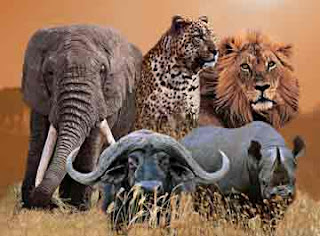Experience wildlife safaris and nature encounters in the Kruger National Park and Blyde River Canyon.
Mpumalanga is a lush, land-locked province, filled with deep ravines, verdant valleys, crystal-clear streams, magnificent waterfalls and plenty of wildlife.
It is found north-east of Gauteng, and shares a long border with Mozambique. It forms the heartland of South Africa’s classic safari territory, and is comprised of the Lowveld and the Highveld.
The Lowveld is restricted to broad valleys below 1000m above sea level; the Lowveld is what many people consider to be the ‘real’ Africa. In this low-lying subtropical climate, broad-leafed and thorn trees co-exist happily in relatively open woodland, interspersed with long grass, and of course, game. In the far north it gets hotter and the vegetation changes to Mopane woodland.
In the very northern part of the country, huge baobab trees dominate the landscape. Much of the Kruger National Park falls into this biome. However, the division between the Bushveld and the Lowveld is somewhat blurred.
The rivers here tend to be broad and slow moving and may consist of no more than a few unconnected pools at the end of the dry season, which is when wildlife congregates around the few water sources making it a good time to view them.
The Highveld, as its name suggests, is situated at a higher altitude and is much cooler than the Lowveld. On the opposite site of the Drakensberg to KwaZulu-Natal, it consists of rolling grassland with many wild flowers and pretty streams. Much of the area has been cultivated as pine plantations, but there are still some pockets of indigenous forest. Trout fishing is very good in the dams and streams in the Dullstroom and Lydenberg areas.
The mighty Kruger National Park is the principal tourism feature of the province, a vast wilderness region larger than the country of Israel. The Kruger National Park forms an elongated stretch of wilderness, from the southern border town of Komatiepoort into the Limpopo Province, right up to South Africa’s northern border with Zimbabwe. Roughly half of the Kruger National Park falls within Mpumalanga and half into the Limpopo Province.
The northerly Limpopo regions are drier and more arid than the dense Bushveld of Mpumalanga, which s hotter and humid. Animals move at will through the various biospheres. And this reserve is world renowned for having the greatest diversity of species in Africa – more than 140 mammal species, 500 bird species and more than 300 different tree species, including baobabs, marulas and mopanes.
Accommodation the Kruger National Park ranges from clean campsites to very comfortable and luxurious game lodges. The private reserves on its borders are, without exception, very luxurious. Exclusive lodges offer outstanding accommodation, five-star food, evening “braais”, or barbeques under African skies and night game drives led by experienced game rangers.
The province is very fertile and there are many huge plantations growing produce ranging from avocado pears to citrus, which has made “agri-tourism” popular. There are also hundreds of thousands of hectares of timber plantations in the province, making driving around the region extremely enjoyable.
Mpumalanga is also home to part of the great Drakensberg range, a magnificent canyon called Blyde River Canyon, which is the third largest and only green canyon in the world.
This system of canyons and escarpments is responsible for one of the world’s most breathtaking views from a place known as “God’s Window” on the very edge of South Africa’s shield-shaped interior plateau. The Blyde System includes another famous site called “The Three Rondavels”, with magnificent views.
The painted geometric patterns of Ndabele homes and their beaded traditional clothes can be seen at villages such as the Botshabelo Historical Village.
Must-Do’s While in Mpumalanga:
View the Big Five
Enjoy the amazing scenic beauty
Visit Pilgrim’s Rest
Hiking, biking and trout fishing





No comments:
Post a Comment